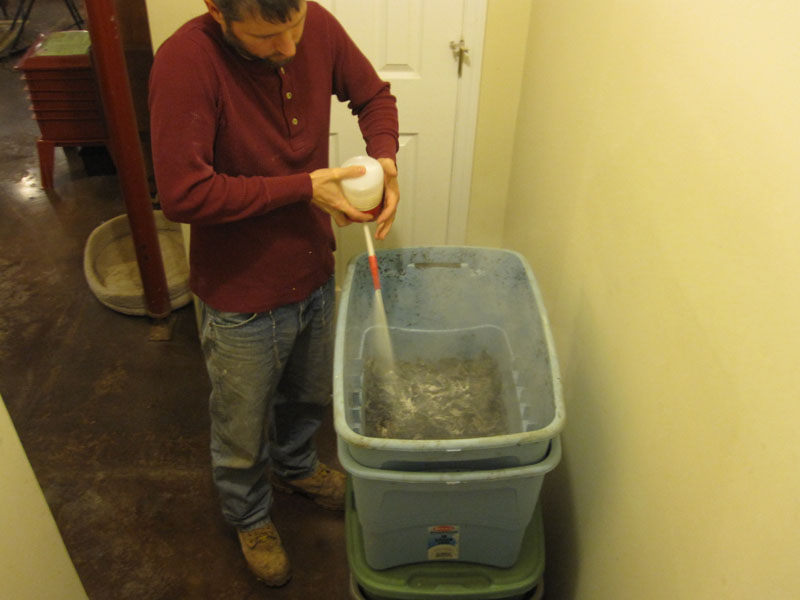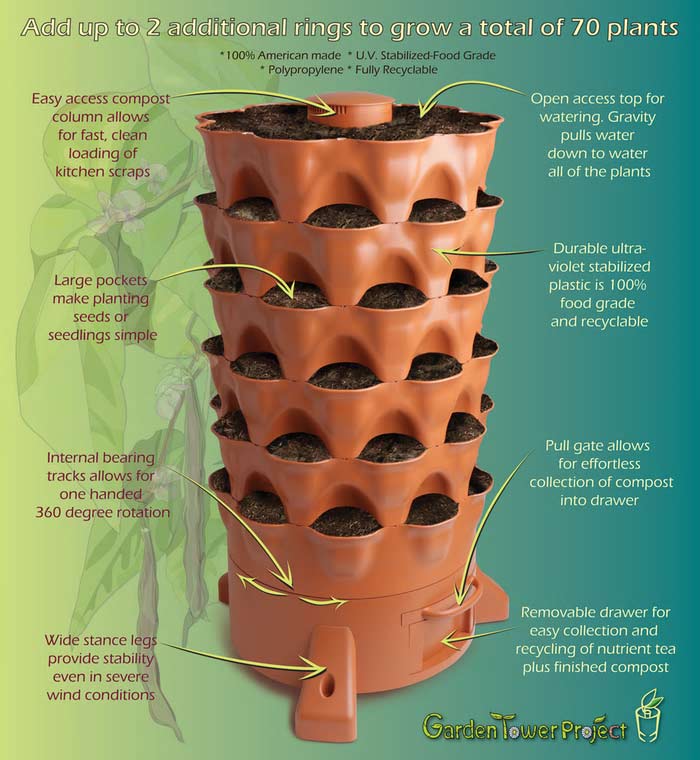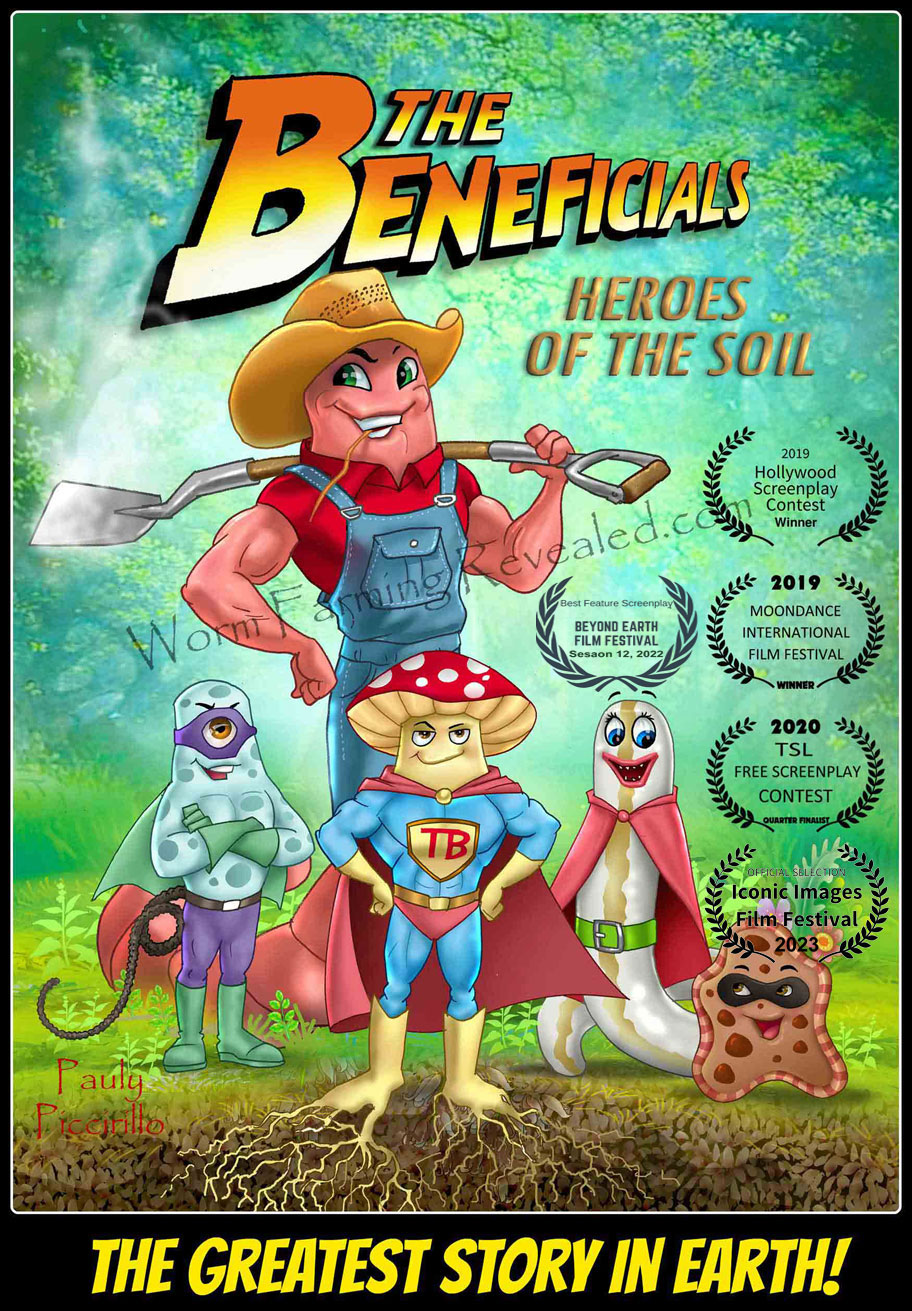What is Diatomaceous Earth?
What is Diatomaceous Earth?
A.K.A Diatomaceous silica, silicon dioxide, diatomite, DE, Kieselgur (in Europe), fossil shell flour, amorphous silica, dinosaur dust, diatoms, and D earth.
Come back to this page, but you might want to also read...
Understanding Diatomaceous Earth In a Nutshell
|
DE is the fossilized remains of diatoms. It's a living single-celled marine plant organism with a hard shelled body. It is found in the sedimentary layers (thus the term D Earth) throughout the world. It is used in a wide variety of applications from insecticides to animal food and food preservation (usually grains). |
Diatomaceous Earth Videos Below
All of Our DE Pages
- What is DE and how to apply it in the worm bin (you're here)
- DE Food Grade for home, garden, and animals.
- DE Benefits for humans
- DE Safe Practices
- DE and Bees Harmful or not?
Chemical formulas: SiO2*nH2O
Quality Diatomaceous Earth food grade contains silica of about 84% - 89% and the other remaining percentages are sodium, iron, and other trace minerals such as titanium, boron, manganese, copper and zirconium...etc.
If you are wanting to purchase Diatomaceous Earth food grade then make sure you're getting a quality product. Because of the different mining processes and locations, the percentages will very. DE containing 86% Silica will be just as effective as DE containing 89% Silica.
You will know that you have purchased poor quality DE if the shell flour looks any other color than white to slightly off-white.
Caution!
Know the Difference
Now, I want to be very clear to those who may not know the difference. There are three forms of Diatomaceous Earth:
- Food grade DE is mined from ancient fresh water lake beds which is approved by the EPA and FDA
- Straight calcined (heated), mined from fresh and salt water, which is used as pool filters and beverage filters like beer, juices, and even oils.
- Flux Calcined, (heated) treated differently, but like above for filtering.
The food grade is mined in its natural form and processed to rid it of unwanted dirt and other materials. The non-food grade can be mined from fresh or salt water bays or estuaries, dried and then heated at high temperatures to increase the crystalline content to help it aid in the filtration process.
These diatoms still grow in freshwater and saltwater lakes and bays and feed on dissolved silica or silicon dioxide.
This gives them their crusty outer shell that we desire so much. Mostly volcanic ash is the source for these diatoms which falls into the water and is partially dissolved.
When the silica is depleted, the diatoms die and the shell falls to the bottom of the lake where it sets on top of many other layers of diatom shells and volcanic ash and sometimes limestone. When another volcano erupts the diatoms start to populate repeating the process all over again.
The life span of a diatom is about 6 days.
*Warning*
- The non-food grade is harmful to animals and humans. So stay away from this stuff unless your purpose is to filtrate. Dispose of it properly.
- If your purpose is to use with plants and animals or an insecticide make sure the label reads "Diatomaceous Earth Food Grade"
How Does DE Work On Insects?
|
There remain two schools of thought on this process with the first being more popular and painted into the minds of users everywhere. I cannot tell you for certain which is the best or correct answer but I lean more towards the latter. |
- Old School - The Silica crystals has tiny microscopic edges that scratch away at the waxy exoskeleton of hard bodied insects. This causes them, in time, to loose all the moisture contained in their body. They simply dehydrate and die.
- Current Thought - The Diatoms are extremely porous, enabling them to absorb any moisture that crosses their path. Insects fall prey to these tiny cylindrical looking shells due to their ability to absorb the waxy coating that protects the insect from the loss of moisture.
Either way, I believe we can all agree that insects don't die by means of chemical action, but rather through means of mechanical action by physically coming into contact with the substance.
Can Insects Develop an Immunity To DE Overtime?
A bug has a better chance of developing an immunity to the bottom of my giant, steel-toed leather boot than it does building up a resistance to DE.
DE is thousands of years old. It will literally last a lifetime. It is silica and has no chemical or toxic properties that an insect can build any tolerances to.
It dies by dehydration. If it does find a water source, it'll spend all of its time trying to replenish its fluids and eventually die from starvation if the lack of moisture or the bottom of my boot doesn't get it first.
Once the insect comes into contact with the dry inert substance...it's curtain time.
Will DE Harm Worms?
The short answer is No.
I use it in my chicken coop, on my chickens and goats and in their food. I have many times gone from the coop to the worm bin and back to the coop with DE all over my hands. They love those worms :-)
It only harms the hard bodied insects. It's just plain silica and may, in fact, aid in some beneficial digesting and grinding of the food and benefit the soil as it contains many good trace minerals.
Should I use DE in the worm bin?
I personally don't use it in my worm bins, except for testing, as I haven't the need. I like the interaction among the worms and all the other critters that help to play a role in the soil food web.
However, should something get out of control and nature does not step in to correct the imbalance, then I might find myself using a little after all.
I performed a study on the use of DE in one of my plastic tub worm bins to rid it of some gnats. The next day the gnats were gone and a week later the worms were still alive eating as usual.
~Update~
I have used it a few more times in the worm bin to rid it of fruit flies, house flies, and sewer flies. I brought some composted goat manure in that I had left outside a little too long and the flies had laid their eggs in it. The DE worked as expected. I use DE lightly now as a mineral supplement and grit for the worm's gizzards.
How to use Diatomaceous Earth food grade in the worm bin
|
I would be careful on the amount you use and how often. To my knowledge there hasn't been a lot of study with Diatomaceous Earth and vermicomposting. |
Although I can only imagine its positive influence. I've read of other commercial and home vermicomposters having success with it, but they do not use very much.
Sprinkle a little in on the top surface just enough for coverage, but do not cover too much. You should still be able to see the vermicompost. Sprinkle it like pepper. Don't cover it and avoid mixing it in. The purpose is for population control.
Mark, one of my readers, said he uses it to control fruit flies and these hang out on top of the food source as do other pests. They lay their eggs in which the larvae will head down into the food source.
You may have to leave it in for a few days or longer for all the insects, eggs, and larvae to complete their cycles. Keep the lid off the container or it will trap the moister causing the DE to become wet.
The larvae will not die until they hatch into adults, but will die before they have a chance to copulate. The purpose is to keep the DE dry. The only way to do that is to keep it on top and out of the moist bedding or you will basically defeat the purpose .
Remember, DE it loses its absorptive abilities when wet.
It's also very absorbent and it will suck the moisture right out of the worm bin. So keep a spray bottle handy after you have managed your infestation. It shouldn't be an issue if the DE is setting on top and in moderation.
The light sprinkling may be enough to deter the unwanted pests. You'll notice me dusting mine with a dust-pistol. It looks like a lot but it's a very fine powder and it will blow everywhere.
Did it bother my lungs? No. I didn't even feel its presence. Sprinkle it in by hand or use an empty spice shaker this will eliminate the dust if you are sensitive to it.
Some commercial worms farmers are starting to realize DE's ability as an insecticide and overall health benefits for the worms, plants and you from its 14 beneficial trace minerals.
Caution:
Use a mask and gloves anytime you use this in heavy or large amounts. It is abrasive and can affect the lungs with some people. It is super absorbent and can dry the hands. Only use the product in the manner the label instructs.
Applying Diatomaceous Earth In the Worm Bin
Final Thought
I believe Diatomaceous Earth food grade is perfectly fine to use in a worm bin, but due to the lack of study by many vermicomposting farmers I recommend using it in moderation and only when needed. Also, to those who put it in their gardens and all over their plants...
I've found that DE WILL KILL the honey bees (but not by experience)
It's by far better to use than chemical pesticides and it's safe for humans and pets and even beneficial with its many trace minerals.
I think DE can and should be used in the worm bin and gardens as a safer and natural alternative to toxic chemicals. The bees can benefit far better from the DE than harmful toxins.
There are better ways to apply the DE than just "Blind Dusting". It is my opinion that the subject should be visited so I dedicated a page to that as well. Click below to go to the page.
Diatomaceous Earth and Bees - Harmful or Not?
If you'd like to learn more about DE food grade then you can purchase the first practical DE book ever, titled Going Green Using Diatomaceous Earth How-To Tips by Tui Rose. Her Latest book now titled, Silica Savvy Solutions.
You will be completely "blown away" when you find out how many people, industries, and farmers are already using this purely natural and safe substance.
Also, find out why DE has been "swept under the rug" for so many years and why the toxic chemicals seem to reign supreme.
|
The Most Comprehensive Diatomaceous Earth Book on the Market By: |
My Most Trusted DE Supplier Below
I trust, use, and recommend these DE products to all of my readers.
Buy them for your health, your animal's health, and to kill unwanted pests & parasites safely and naturally.
Buy Diatomaceous Earth Products
We have started our own Diatomaceous Earth testimonials below
Share Your Testimonial On Any of the DE Pages
Have A Great Story About Diatomaceous Earth?
Do you have a great story about this? Help us to spread the word about Diatomaceous Earth. Tell us how it benefits you.
What Other Visitors Have Said
Click below to see contributions from other visitors to this page...
Breathing silica will cause silicosis over time. Always wear a mask. 




You won't notice a problem while dusting with silica, but it is a very fine particle that goes into your lungs and does not come out, over time causing …
Head lice 




The babies picked them up in AR and our family of seven all got them. The shampoo poisons worked on everyone except one grandson and I.
After exhausting …
Bedbugs!! 




Five years ago, we realized we had them and freaked out. I freaked out more when I realized that Pest Control companies would drench our living quarters …
How Can You Tell The Visual Difference Between Food and Non Food Grade DE 




I have a question and not a story. If you place non food DE beside Food grade DE can you see a actual difference?
If not then how can the two be identified, …
Beryl Saunders from Cape Town 




To start off it is great to find a South African contributing on this page about diatomaceous earth. Nearly all information comes from overseas.
My …
Diatomaceous reduce the tryglicerides 




My husband takes 1 tbs with water and the tryglycerides went down from 560 to 230 within 1 month. I go to the health fair every year and for a few years …
Return to Home Page from Diatomaceous Earth
If you like my DE page then please share it















